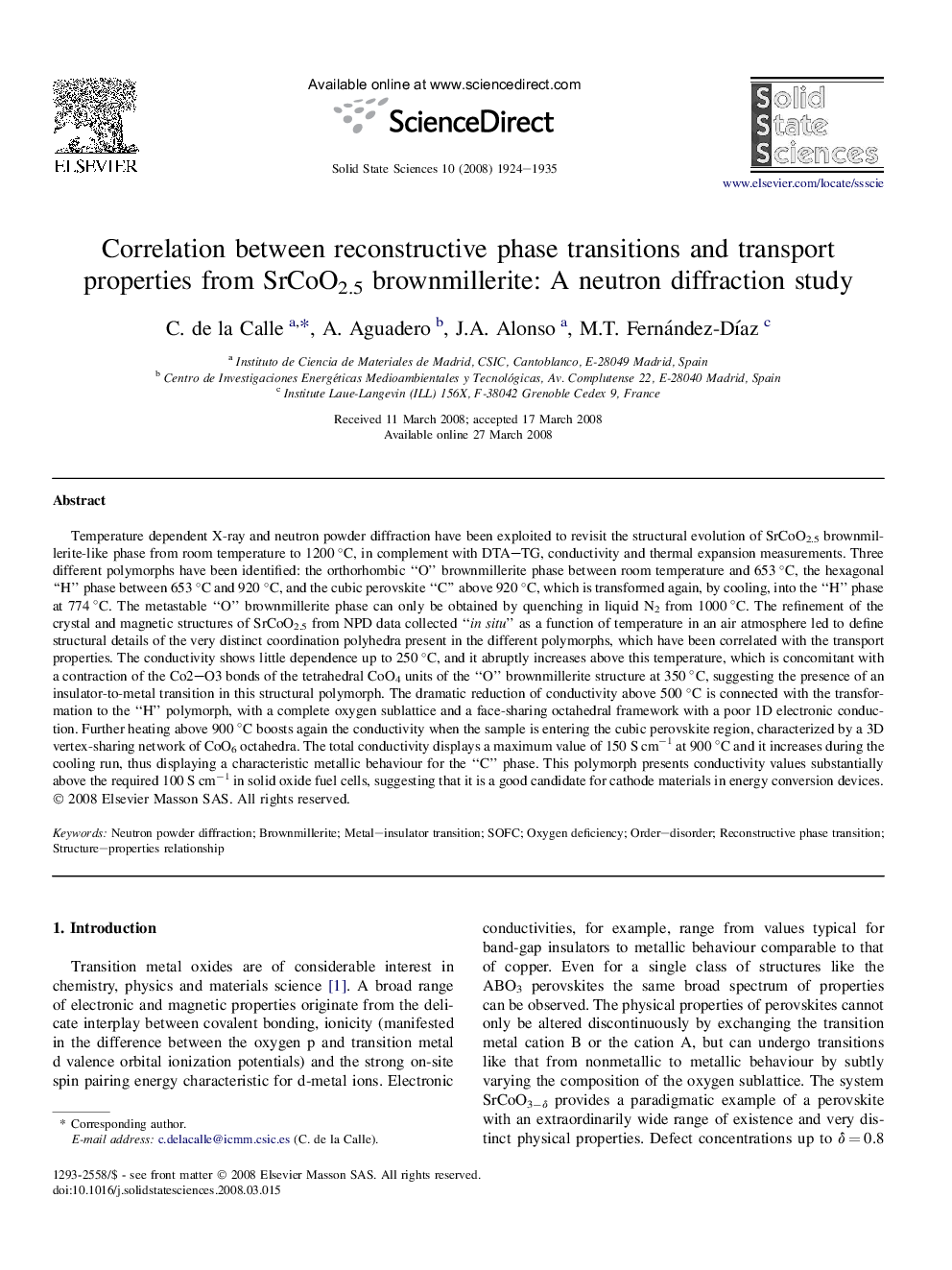| Article ID | Journal | Published Year | Pages | File Type |
|---|---|---|---|---|
| 1506584 | Solid State Sciences | 2008 | 12 Pages |
Temperature dependent X-ray and neutron powder diffraction have been exploited to revisit the structural evolution of SrCoO2.5 brownmillerite-like phase from room temperature to 1200 °C, in complement with DTA–TG, conductivity and thermal expansion measurements. Three different polymorphs have been identified: the orthorhombic “O” brownmillerite phase between room temperature and 653 °C, the hexagonal “H” phase between 653 °C and 920 °C, and the cubic perovskite “C” above 920 °C, which is transformed again, by cooling, into the “H” phase at 774 °C. The metastable “O” brownmillerite phase can only be obtained by quenching in liquid N2 from 1000 °C. The refinement of the crystal and magnetic structures of SrCoO2.5 from NPD data collected “in situ” as a function of temperature in an air atmosphere led to define structural details of the very distinct coordination polyhedra present in the different polymorphs, which have been correlated with the transport properties. The conductivity shows little dependence up to 250 °C, and it abruptly increases above this temperature, which is concomitant with a contraction of the Co2–O3 bonds of the tetrahedral CoO4 units of the “O” brownmillerite structure at 350 °C, suggesting the presence of an insulator-to-metal transition in this structural polymorph. The dramatic reduction of conductivity above 500 °C is connected with the transformation to the “H” polymorph, with a complete oxygen sublattice and a face-sharing octahedral framework with a poor 1D electronic conduction. Further heating above 900 °C boosts again the conductivity when the sample is entering the cubic perovskite region, characterized by a 3D vertex-sharing network of CoO6 octahedra. The total conductivity displays a maximum value of 150 S cm−1 at 900 °C and it increases during the cooling run, thus displaying a characteristic metallic behaviour for the “C” phase. This polymorph presents conductivity values substantially above the required 100 S cm−1 in solid oxide fuel cells, suggesting that it is a good candidate for cathode materials in energy conversion devices.
Graphical abstractThree very distinct polymorphs of overall stoichiometry SrCoO2.5 are identified in the temperature range 25–1200 °C, starting from the “O” brownmillerite phase previously obtained by quenching in liquid N2 from 1000 °C. A metal–insulator transition is detected in the “O” phase, correlated to subtle structural changes. A drop of conductivity associated to the “H” hexagonal polymorph is followed by a huge increase of σ when entering the cubic “C” phase.Figure optionsDownload full-size imageDownload as PowerPoint slide
